More than 200,000 people climb to the summit of the mountain every year, as it is a once in a lifetime opportunity to see the scenery from the top of the volcanic mountain. Not only is it popular among visitors to climb the mountain, but also for the Japanese. Climbing Mount Fuji is doable whether you are a regular hiker or not. It provides a unique experience and a once in a lifetime scenery.
Mount Fuji Climbing and Hiking Season
The official climbing season on Mount Fuji is between early July and mid-September. During this period the mountain usually is free of snow and the weather is moderate. The peak season is usually during school summer vacation from around mid-July to the end of August. If you want to avoid bigger crowds, it is best to go before school summer vacation and during the weekdays or after in September.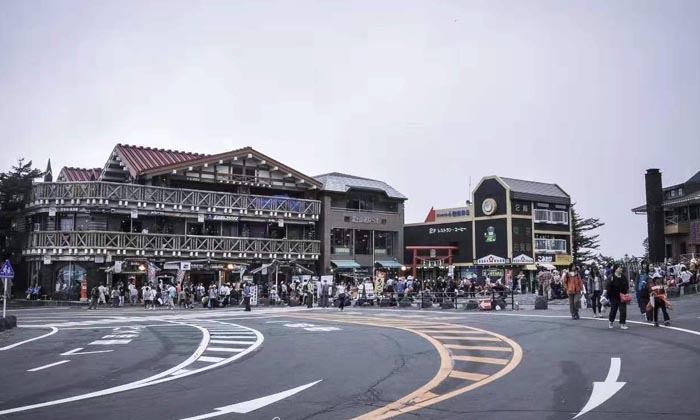
Offseason Climbing
There are no restrictions or regulations for climbing Mount Fuji outside of the official climbing season. There are signposts that are put up saying the trail is closed, but they are saying to climb Mount Fuji at your own risk. From around October to mid-June, during the offseason, climbing the mountain to the summit is dangerous due to the extreme weather conditions, with low temperatures, extreme wind, snow, ice, and risk of avalanches. Note that some mountain huts are opened a few days before the start of the climbing season and may stay open until around mid-September. Public transportation to Mount Fuji at the 5th stations may not be as frequent as during the climbing season. If you plan on climbing in the offseason, you are doing so at your own risk.
Trails for Hiking
There are four trails that are accessible to the summit: Yoshida, Subashiri, Gotemba, and Fujinomiya. On average, the climb takes around 5 to 10 hours depending on which trail you choose. Some trails are harder than others, some take longer than others to climb or descend, so be sure to look ahead of time and do some research to make sure you know what trail you want to take. Below is a summary of the trails: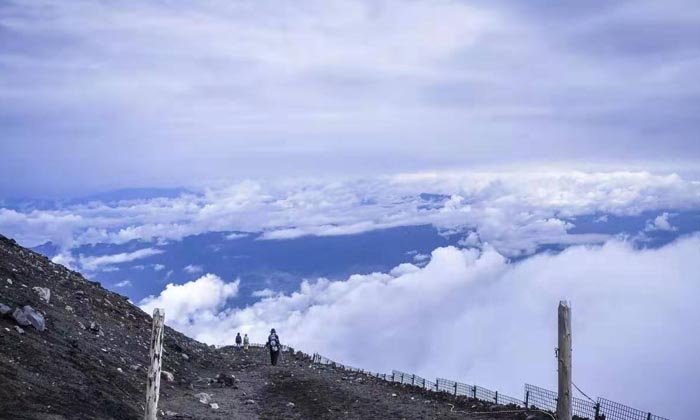
Fuji Subaru Line 5th Station, Yoshida Trail
The altitude is about 2,300 meters. The ascent takes around 5 to 7 hours and descent takes around 3 to 5 hours. This is the most popular and easily accessible, with many facilities and huts along the entire trail.
Fujinomiya 5th Station, Fujinomiya Trail
The altitude is around 2,400 meters. The ascent takes around 4 to 7 hours and descent takes around 2 to 4 hours. It is the second most popular route, with many facilities along the way.
Subashiri 5th Station, Subashiri Trail
The altitude is around 2,000 meters. The ascent takes around 5 to 8 hours and descent takes around 3 to 5 hours. It is considered as one of the challenging routes.
Gotemba 5th Station, Gotemba Trail
The altitude is about 1,400 meters. The ascent takes around 7 to 10 hours and descent takes around 3 to 6 hours. It is considered as the hardest route or the four, with huts only available at the 7th and 8th stations.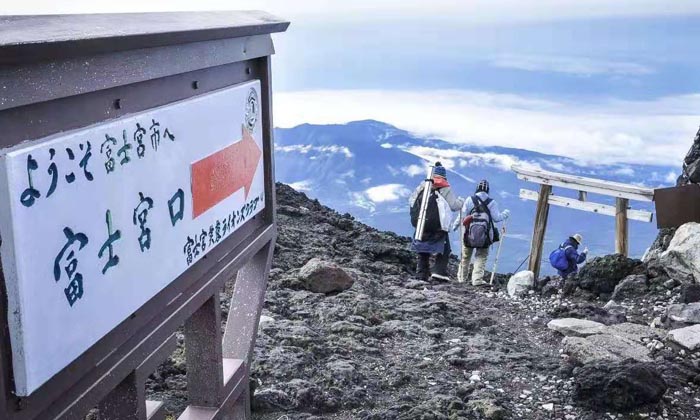
Mount Fuji is divided into ten different stations, with the first station at the foot of the mountain and the tenth station being the summit. Four different 5th stations surround the mountain with different trails. The most well known, 5th station, where cars may no longer pass at each trail, is the Subaru line, also known as the Kawaguchiko 5th Station that goes along the Yoshida Trail. The majority of climbers usually choose to begin their climb from this station. Please note that there are separate ascending and descending trails on all four trails, as people often find themselves on the opposite side of the mountain from where they started.
Mountain Huts
Each trail has mountain huts, but some trails have less than others. The Yoshida Trail has more than a dozen mountain huts between the 7th and 8th stations. The mountain huts provide lodge-styled facilities that offer food, drinks, and overnight accommodations. Do not expect hotel or hostel conditions, as they are more similar to a large dormitory-style room with bunk bed style with futon and blankets or sleeping ball provided. An overnight stay can cost around 5,000 yen per person with no meals included and around 7,000 yen per person with two meals included. To make sure you do have a place to stay overnight when you go climbing, you can make reservations in advance. For those who just need a place to take a rest, it costs around 1,000 to 2,000 yen per hour. To avoid bigger crowds in a mountain hut, avoid climbing on the weekends.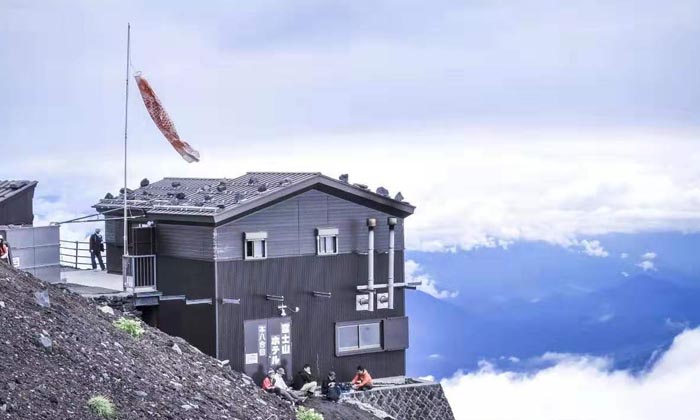
Difficulty Level (Altitude Sickness)
There are no major difficulties in climbing Mount Fuji that requires climbing gear, but there will be points where there it is rocky and steep. The main challenge is that it is very strenuous with the elevation gain, a higher altitude that could lead to altitude sickness, along with the rapidly changing weather. There is a risk of headache, dizziness, and nausea as the body requires time to adjust to a sudden increase in altitude. To avoid altitude sickness, it is best to climb the mountain at your own pace, slowly, staying hydrated and taking frequent breaks. Climbing Mount Fuji may not be a decision you make last minute, as you do want to have the proper preparation. The weather can be unpredictable as there may be unexpected weather changes, including rain, wind, or snow. With the proper preparation in equipment and gear, it will be a safer way to climb the mountain.
Timing
Most people who choose to hike the mountain want to see the sunrise from the summit. A recommended way is to climb to the 7th or 8th station on the first day and get some rest at a mountain hut and continue to the summit early the second day. The sunrise does take place as early as 4:30 to 5:00 am in the summer. Ascending and descending the mountain all in the same day is possible, but not recommended as there is a risk of altitude sickness. If you need extra time to be able to take more rest breaks, please plan accordingly.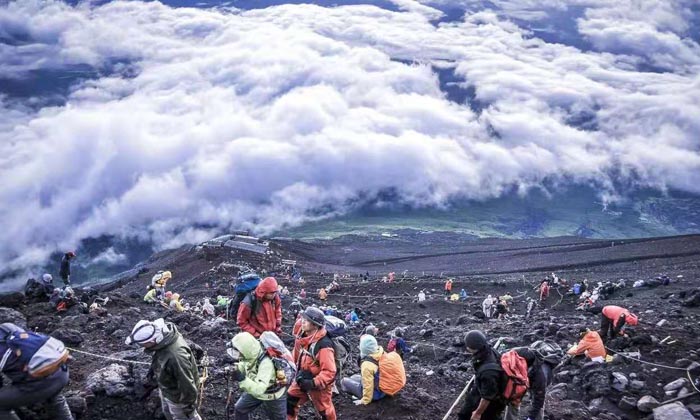
What to Bring
It is recommended to wear proper shoes, like hiking shoes that may be waterproof and ankle-length, as there may be rocky and steep terrain. Proper clothing that can be windproof and rainproof would be best, as you have to prepare for changing weather conditions with sun and rain protection, low temperatures, and strong winds. Wearing layers is recommended as you can take off your clothes or put on according to the weather conditions. You can choose to bring gloves, a warm hat, extra socks, sunglasses, face mask, or a hiking stick. Sunscreen is important as UV rays are more potent in higher elevations. If you plan on hiking at night, it is highly recommended to bring a flashlight or headlamps.
Along with the right gear, you must remember to bring food and water as they are the most important. Snacks like crackers, candy bars, chips, cookies, energy bars, or fruits are items you can bring. There are food and water available for purchase in the mountain huts, but the prices rise as you get higher in altitude, so don't forget money if you plan on buying food also. Make sure to bring coins for the restroom facilities that will cost money (100 yen) from the 5th station onwards. Note there are no public garbage bins on the mountain. Be prepared before hiking and climbing Mount Fuji for your own safety.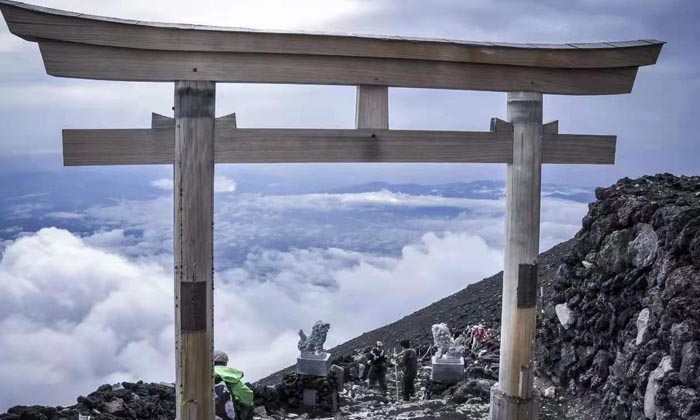
Fees
At the start of the climb at the 5th station, you will have to pay the 1,000 yen maintenance fee. For toilet facilities, it will be 100 yen, and there are helmet renting facilities available for 2,000 yen. Mountain huts will range from 5,000 to 7,000 yen depending if you want meals included for an overnight stay. If you want to take a short rest, it will be around 1,000 to 2,000 yen per hour.
Here is the official website for Mount Fuji Climbing for more information: See Details..
Hingking and Treking Tours
As a reliable Tokyo Travel Agency, we provide guided Mount Fuji Hiking Tours and Private Chauffeurs for travelers from overseas. Whether you are looking for a short Mount Fuji Hiking tour or a private Chauffeur, you can easily find the most suitable one at an affordable price. Contact our representatives to book our Mount Fuji private tours and Tokyo private chauffeur today.Most Frequently Asked Questions
-
How many routes are there to climb Mount Fuji?To climb Mount Fuji, there are 4 climbing routes. The Yoshida, Fujinomiya, Subashiri, and Gotemba trails.
-
Which route is more suitable for my first hiking of Mount Fuji?Among the few, the Yoshida trail is the most popular of all and the difficulty of the route is relatively lower than the other trails. The scenery along the way is beautiful. The trail is suitable for visitors who are new to mountain climbing and travelers without previous mountain climbing experience.
-
When does Mount Fuji climbing generally open?Generally speaking, the mountain trails are opened on July 1st and closed on September 1st every year. Kawaguchiko and Yoshida are open on time on July 1st without official announcements and can be freely entered into the mountain; the other trails such as the entrance at Gotemba and Fujinomiya, etc, are opened later because of the rush to repair the mountain roads. Usually, after the opening of Yoshida, the Gotemba and Fujinomiya trails open not long after.
-
Is it OK to climb Mount Fuji in early July?When the mountain is opened in early July, there is residual snow on top of the mountain and the route is still under repair. Some mountain huts, the Mount Fuji Summit Post Office, and the Sengen Shrine are not opened yet. There are no specific opening hours for the Summit Post Office and the Sengen Shrine, all depending on the residual snow at the peak. Most of them will open one after another in mid-July. Usually once the mountain huts open the Sengen Shrine and Summit Post Office will open not long after another.
-
When is Mount Fuji the busiest with visitors?In recent years, there has been an increase in the number of climbers. It is recommended to avoid the holidays and before and after early August and late August. The weekend should also be considered to avoid the implementation of the number of restrictions that are allowed to climb the mountain since 2013. If you want to enjoy the climb, it is recommended to avoid the busiest time.
-
What is the most convenient way to get to Mount Fuji from Tokyo?It is recommended to choose the Yoshida Line from the northern foot of the mountain. There are buses from Shinjuku, Haneda Airport, and Yokohama. There are also buses from Kawaguchiko. Starting from the Fuji Subaru Line 5th Station (2305 meters), this route is the most popular and has the most climbers.
-
Can I use a credit card on Mount Fuji?The 5th Station at Mount Fuji has no ATMs and only accepts cash. Please remember to bring enough money to go up the mountain. At the mountain huts, buses, and restaurants, they all only accept cash.
-
Which trail is more difficult for mountain climbing?The Gotemba Trail, with the high elevation difference, long distance, and lack of rest points is more suitable for experienced climbers or those who have already traveled other routes. You have to be prepared with drinking water and necessary items to go up the mountain. Due to volcanic eruption in the past, the route is all sandy, and there are no trees or shade.
-
How long does it take to get up and down Mt. Fuji?If you plan to reach the summit in two days, it will take about 6-7 hours on day 1. It is about 11 hours to the summit. and the descent to the 5th station is about 3 hours on day 2.
- Tel: +81 50-3701-6391
- Email: info@japanholiday.com
- Working Hours: 8am-7pm, (Japan)
- Tel: +1-6265617117
- Email: info@japanholiday.com
- Working Hours: 8am-7pm, Pacific Time

